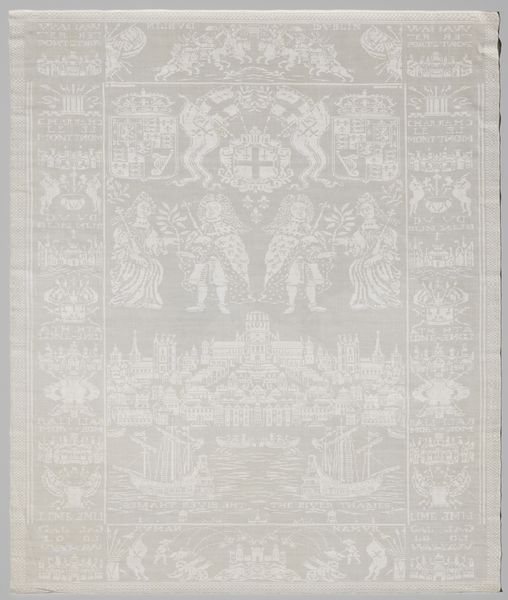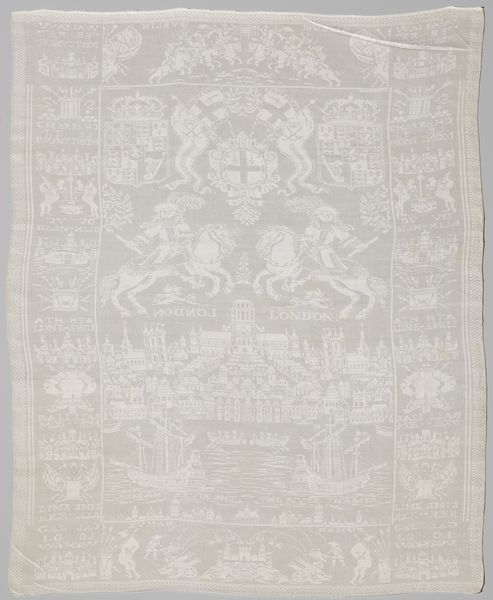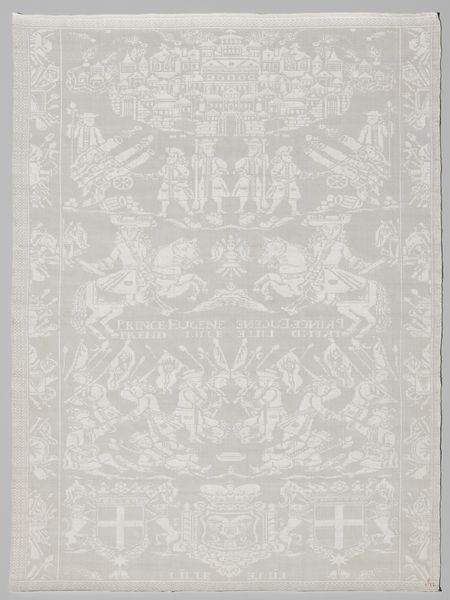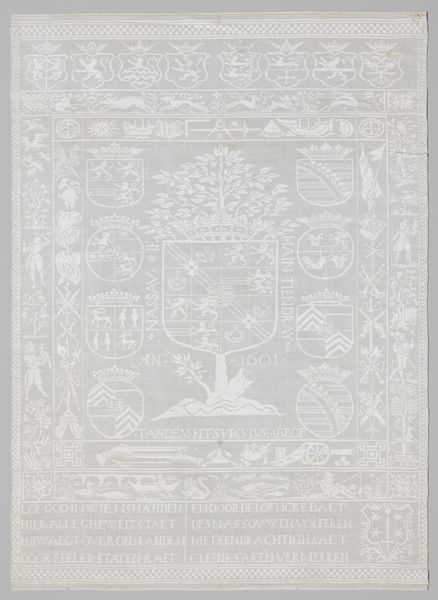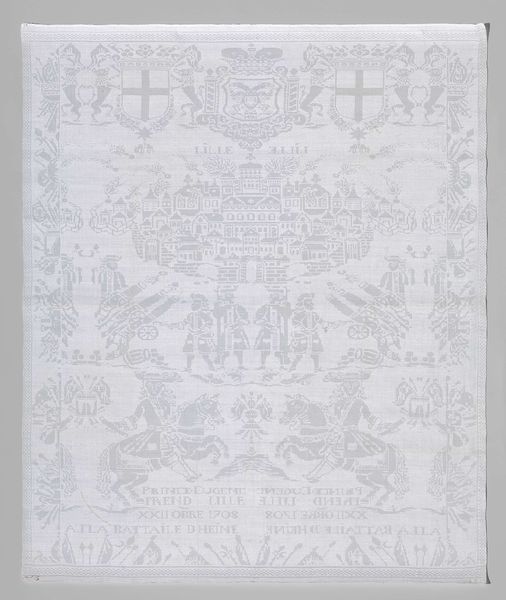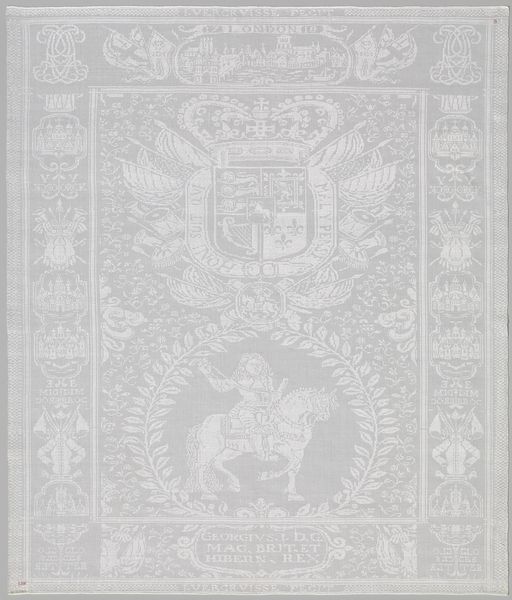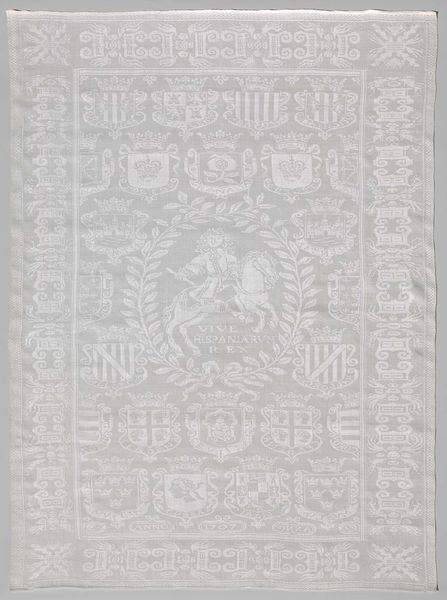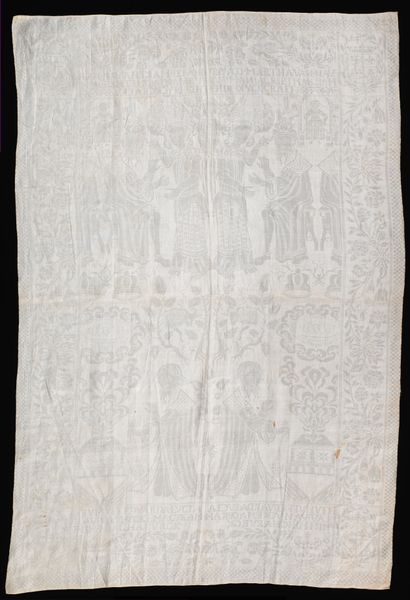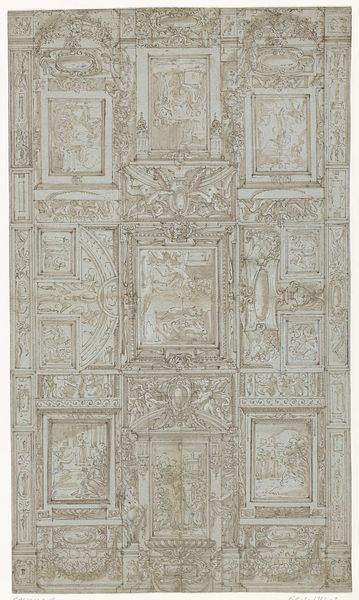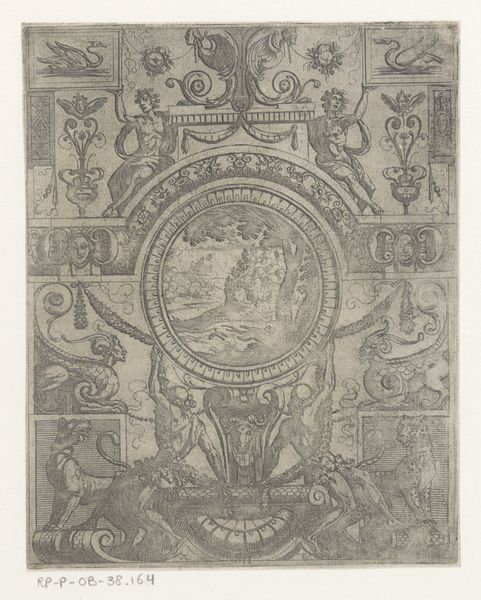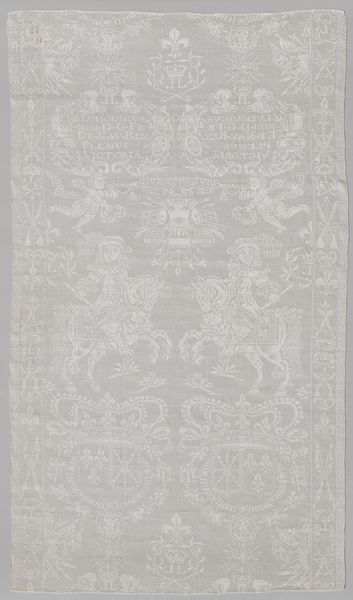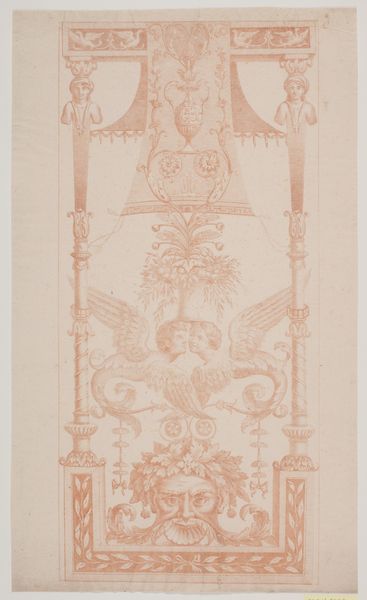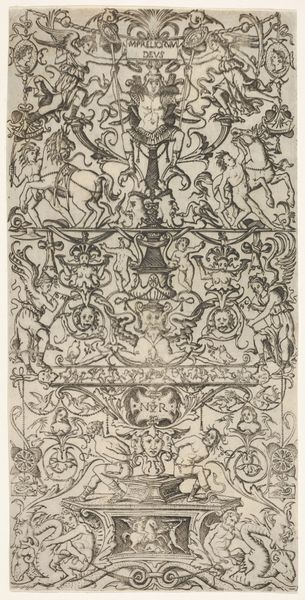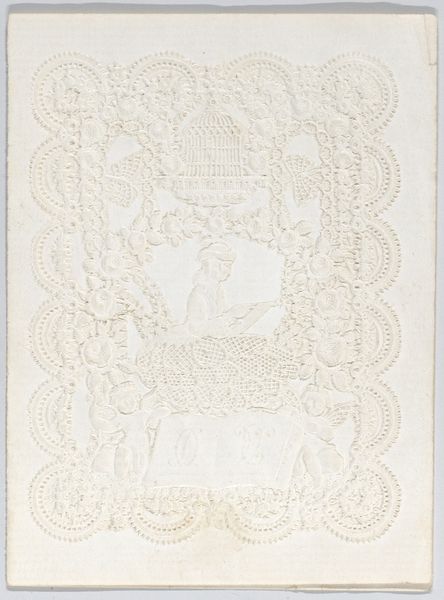
weaving, textile
#
baroque
#
weaving
#
textile
#
figuration
#
history-painting
Dimensions: height 97 cm, width 70 cm
Copyright: Rijks Museum: Open Domain
Curator: What an elegant textile! It feels very...ethereal. Editor: Indeed. Here at the Rijksmuseum, we have an interesting example of Baroque weaving from 1702. It is titled "Servet met Filips V, pretendent voor de Spaanse troon," which translates to "Napkin with Philip V, pretender to the Spanish throne." Curator: Ah, I see him represented along the bottom edge, astride a horse. Even in a monochromatic weaving, you get a sense of self-assuredness and the authority he projects. The entire cloth seems to radiate power. What a statement piece. Editor: The choice to depict this on a linen damask table napkin certainly makes a political statement! During the War of the Spanish Succession, imagery became a vital tool. Table linens like these weren't just for show—they were conversation starters, subtly (or not so subtly) influencing public sentiment. Curator: Absolutely. The symbolism is potent. The heraldic crests, repeated figures, and Latin phrases… it speaks to an era of royal propaganda conveyed through the everyday object. Did such symbols reflect a conscious effort to shape views toward him? Editor: Undeniably. Woven into the fabric of daily life, these napkins broadcasted support for Philip's claim. They are artifacts that remind us how art and design are always connected to politics. Consider how its intricate detail almost feels delicate—which contradicts the very intention, to inspire support during a time of war. Curator: And there’s something profoundly affecting about witnessing history pressed into fabric. These images persist in the memory. As durable artifacts, we might consider such cultural objects to shape history for many future generations. The level of detail… such patient craft... It echoes the idea of carefully laying the foundation of a dynasty. Editor: A fitting conclusion. What we observe is how even the simplest artifact of daily life communicates ambition, shapes understanding, and carries memory—connecting art and politics.
Comments
No comments
Be the first to comment and join the conversation on the ultimate creative platform.
